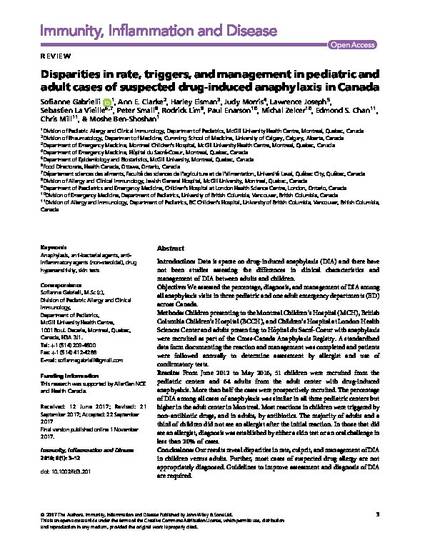
INTRODUCTION: Data is sparse on drug-induced anaphylaxis (DIA) and there have not been studies assessing the differences in clinical characteristics and management of DIA between adults and children.
OBJECTIVE: We assessed the percentage, diagnosis, and management of DIA among all anaphylaxis visits in three pediatric and one adult emergency departments (ED) across Canada.
METHODS: Children presenting to the Montreal Children's Hospital (MCH), British Columbia Children's Hospital (BCCH), and Children's Hospital at London Health Sciences Center and adults presenting to Hôpital du Sacré-Coeur with anaphylaxis were recruited as part of the Cross-Canada Anaphylaxis Registry. A standardized data form documenting the reaction and management was completed and patients were followed annually to determine assessment by allergist and use of confirmatory tests.
RESULTS: From June 2012 to May 2016, 51 children were recruited from the pediatric centers and 64 adults from the adult center with drug-induced anaphyalxis. More than half the cases were prospectively recruited. The percentage of DIA among all cases of anaphylaxis was similar in all three pediatric centers but higher in the adult center in Montreal. Most reactions in children were triggered by non-antibiotic drugs, and in adults, by antibiotics. The majority of adults and a third of children did not see an allergist after the initial reaction. In those that did see an allergist, diagnosis was established by either a skin test or an oral challenge in less than 20% of cases.
CONCLUSIONS: Our results reveal disparities in rate, culprit, and management of DIA in children versus adults. Further, most cases of suspected drug allergy are not appropriately diagnosed. Guidelines to improve assessment and diagnosis of DIA are required.
Available at: http://works.bepress.com/rodrick-lim/19/

Creative Commons Attribution License